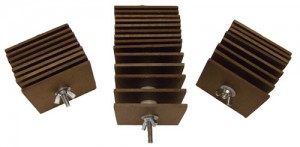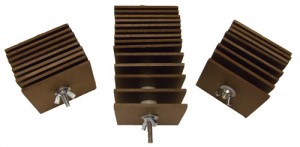 The Hester-Dendy sampler makes it easy to collect marine samples. With some simple parts we can construct a device that we will leave in the water for a couple weeks. Then, presto! We have samples ready to study. It’s the no-muscle way to get specimens.
The Hester-Dendy sampler makes it easy to collect marine samples. With some simple parts we can construct a device that we will leave in the water for a couple weeks. Then, presto! We have samples ready to study. It’s the no-muscle way to get specimens.
Some creatures to look for in your Hester-Dendy sampler include mussels,different species of algae, insect larva,and any organism that attaches itself to rocks.
To make your handy, you’ll need a set of materials and a workshop (so this is a bonus experiment!) Here are the supplies you’ll need to gather together – you’ll probably find them in the scrap bin in a corner of a workshop:
[am4show have=’p8;p9;p28;p55;’ guest_error=’Guest error message’ user_error=’User error message’ ]
- Five pieces of plywood (each 4 in2)
- One 12in eye bolt
- 2 nuts and 2 washers for each piece of wood
- Weights (fishing weights work well)
- Rope or cord to suspend the sampler
Here’s how you make it:
- Drill a hole through the center of the wood squares.
- Attach each wood square to the eye bolt with the washers and nuts. Make sure to leave about 2in of space between each piece of wood.
- Attach the weight to the bottom of the sampler.
- Attach the rope to the top of the sample.
- Lower the sampler into the water where you want to gather samples (on the rocks near the muscles, for example), and leave it there for two weeks.
- Pull it up in two weeks and marvel at your samples!
How does it work? The Hester-Dendy sampler works by creating new real estate for the organisms you’re sampling. Leaving it undisturbed for two weeks gives the organisms enough time to move in and get comfortable.
Troubleshooting: After two weeks there are still no samples… Well, the problem is either in the placement or the structure. If the sampler is too far removed from what you’re sampling, or in an area not conducive to them (too much movement, exposure to predators, etc) the organisms might now be able to move in. In that case, simply try several locations until one works. Or, the problem could be structural. If the space between the wood is too small, the organisms might not be able too fit. Alternatively, the wood may not be fastened tightly enough—meaning that it moves around while in the water, making it more difficult for the organisms to get on.
[/am4show]


Oops – thanks for your eagle eye! I’ll fix that right away.
Aurora – You may want to LEAVE the device in the water. I don’t think it can really live. 😉
(First paragraph here and in the list of videos.) “… a device that we will live in the water …”